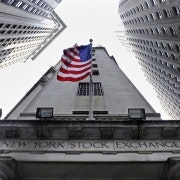'Frankenstein' CDOs twitch back to life
Has Frankenstein returned? That is a question some investors might ask when they look at the world of collateralised debt obligations.
After all, a mere three years ago it seemed as if the really monstrous forms of CDOs that proliferated during the credit bubble had been killed off. Most notably, issuance of so-called synthetic CDOs – or bundles of derivatives based on corporate, mortgage and sovereign debt – collapsed from a peak of $648 billion in 2007 to $98 billion in 2009.
But now those CDOs are apparently twitching again. As my colleague Stephen Foley has reported, issuance of collateralised loan obligations – or bundles of corporate bonds and loans – has surged this year to $37 billion. And a report from the Wall Street Journal suggests that some investment banks are now considering issuing synthetic CDOs too, or pools of corporate derivatives.
So should this development be triggering screams from policy makers?
The answer is both ‘yes’ and ‘no’. For the key point to grasp about the sector is that it is not so much the CDO technology itself that is problematic, but how it is sometimes used; or, more accurately, abused by banks and investors addicted to arbitrage and a desperate search for yield.
To understand this, it is worth relating a little history. Back in the mid-1990s, when bankers at JPMorgan developed the synthetic CDOs on a large scale, these instruments were primarily used to repackage corporate debt. JPMorgan wanted to reduce the loan risk on its own book, for regulatory reasons – and realised that if it turned this credit risk into derivatives, it could create securities carrying different tranches of risk and sell these to different investors.
Initially, this concept seemed to work well. For there was plenty of historical data showing how corporate risk performed during an economic cycle, enabling investors to model the risks. And while regulatory arbitrage was always part of the CDO game, JPMorgan was initially relatively cautious in how it exploited the loopholes.
But, as the 21st century dawned, the CDO game turned more dangerous for four reasons.
Firstly, bankers started repackaging mortgage risk, alongside corporate risk, into CDOs. However, this was hard to model because there was little data on how mortgages behaved in a market crash.
Secondly, banks and insurers started exploiting the regulatory loopholes so aggressively that they slashed their reserves against any losses.
Thirdly, the CDOs themselves became so fiendishly complex and leveraged that it became hard to see the risks inherent in these first two points. And then there was a fourth problem: collapsing credit spreads. For by the time that CDO issuance peaked in early 2007, spreads were so wafer thin, and leverage was so high, that even a small swing in prices was enough to create big investor losses.
Or, put another way, in an ultra-low rate environment, the underlying maths in a CDO structure no longer worked.
So has anything changed now? In some senses, yes. These days, investors and rating agencies are (thankfully) watching data inputs and keeping leverage in check. Regulators are also scrambling to curtail egregious forms of arbitrage. It is thus no surprise that the part of the CDO world that has most obviously returned to life – CLOs – is focused on corporate, not mortgage, risk. And the banks cutting these deals can no longer place them in their trading book with minimal reserves. Instead, these CDOs are mostly being passed on to investors who appear more sophisticated and savvy than in 2007.
Indeed, if you want to be optimistic, it is possible to argue – or hope – that what is occurring with CDOs now is similar to what happened two decades ago with interest rate swaps: namely, after a period of crazy excess and scandal, a product is “returning to its roots” in a more sensible form. Frankenstein has been tamed; or, at least employed in a potentially beneficial way.
But there is one big caveat: the credit climate. What made the CDOs so particularly deadly five years ago was that the spreads were wafer thin. But these days – amazingly enough – spreads are tighter still. Now it is possible that this fact alone will act to keep the market in check: with spreads this tight, for example, it may prove impossible for any banks to make the maths of an entire synthetic CDO work.
But there again, a climate of ultra-low rates may also make some investors more willing to overlook risks, be that with synthetic products or anything else.
Either way, the key point is this: if CDOs are ever going to be a valuable part of the financial world they need to be simple, transparent, easy to model and, above all, able to withstand a swing in the interest rate cycle.
Otherwise they should be put back in the coffin, now.
Copyright the Financial Times 2013.













